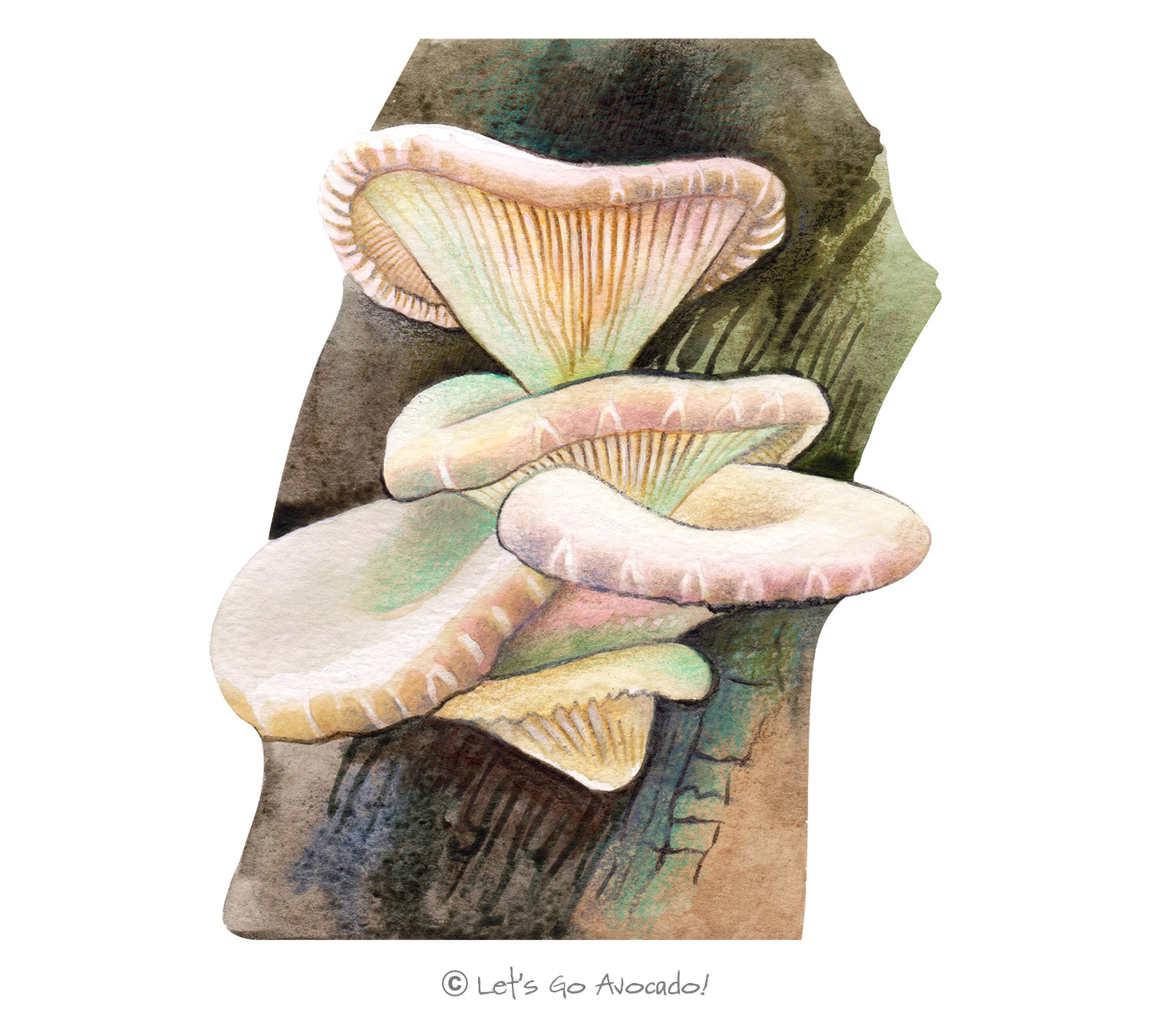

Oyster Mushroom
Tree oyster, angel's wings, pleurotte en huître
Pleurotus ostreatus
This page may contain affiliate links.
Read our disclosure and privacy policy here.
The oyster mushroom is a popular and easily recognizable edible fungi known not only for its culinary uses but also for its various ecological roles in nature. With its fan-shaped caps and delicate taste, it has become a favorite for mushroom foragers and cultivators alike.
Oyster Mushroom
Common Name
Oyster Mushroom
Other Names
Tree oyster, angel’s wings, pleurotte en huître
Latin Name
Pleurotus ostreatus
Distribution
Oyster mushrooms are widely distributed and can be found throughout North America, Europe, Asia, and other regions. They are particularly common in temperateTemperate refers to a climate that’s not too hot and not too cold, with moderate rainfall and distinct seasons like spring, summer, fall, and winter. You’ll find temperate areas in parts of North America, Europe, and Asia. It’s the kind of climate where you can see a wide variety of plants and animals, including deciduous trees that lose their leaves in the fall. Learn More forests.
Appearance
The cap is fan or oyster-shaped, often growing in a shelf-like formation on trees. It can range in color from white to gray or tan to dark brown. The gills run down a short, stubby stem, which is often not centered under the cap.
Size
The cap can range from 5 to 25 cm across, with the stem (when present) being 1-2.5 cm thick and 2-10 cm long.
Habitat
Typically found growing on dead or dying hardwood trees, logs, or stumps. They can also be cultivated on various substrates, including straw and coffee grounds.
Diet
Saprotrophic; oyster mushrooms break down and derive nutrients from decaying organic matter, especially wood.
Lifecycle
The lifecycle of the oyster mushroom involves the germination of spores that form myceliumMycelium is like the ‘root’ or the ‘body’ of a fungus. Just as plants have roots, fungi have mycelium. It is made up of tiny thread-like structures called hyphae that spread out in the soil or other materials where the fungus grows. Learn More. This mycelium, a network of fungal threads, grows through the substrate, breaking it down. Once conditions are suitable (often in cooler temperatures), the mycelium forms fruiting bodies, which we recognize as the oyster mushrooms. After maturity, these fruiting bodies release spores, which then start the cycle over again.
Defense Mechanisms
Oyster mushrooms produce a variety of enzymesEnzymes are like tiny helpers in our bodies and in nature. They are special substances that help speed up chemical reactions. They have specific jobs and shapes, just like tools. They are like the little workers that make sure everything runs smoothly. Learn More that help them break down wood. While not toxic to humans, these enzymes deter many potential herbivoresHerbivores are animals that eat plants as their main source of food. They are like the vegetarians of the animal kingdom. Just as you eat fruits, vegetables, and other plant-based foods, herbivores munch on leaves, flowers, grass, and other parts of plants. Learn More. The mushroom’s growth on wood and elevated locations also provides some protection from ground-dwelling herbivores.
Ecological Importance
As saprobes, oyster mushrooms play a significant role in recycling dead organic matter, particularly wood, in ecosystemsAn ecosystem is a community of living organisms, like insects and birds, and non-living components, like water and rocks, that interact with each other in a specific area. Learn More. They help in decomposing wood, returning nutrients to the soil, and promoting forest health. Oyster mushrooms have also been studied for their potential in mycoremediation, the use of fungi to clean up pollutants in the environment.
ConservationThe act of protecting and preserving natural resources and the environment. Conservation efforts are important to protect beavers and their habitats. Learn More Status
It is common in its natural habitats. Due to its ease of cultivation, it’s also widely grown commercially.

There’s a lot to explore right where we are, in our own neighborhoods and backyards! Join us while we get off the couch and explore the everyday wonders of nature, science, space, engineering, art, and anything else we stumble upon during on our adventures.







